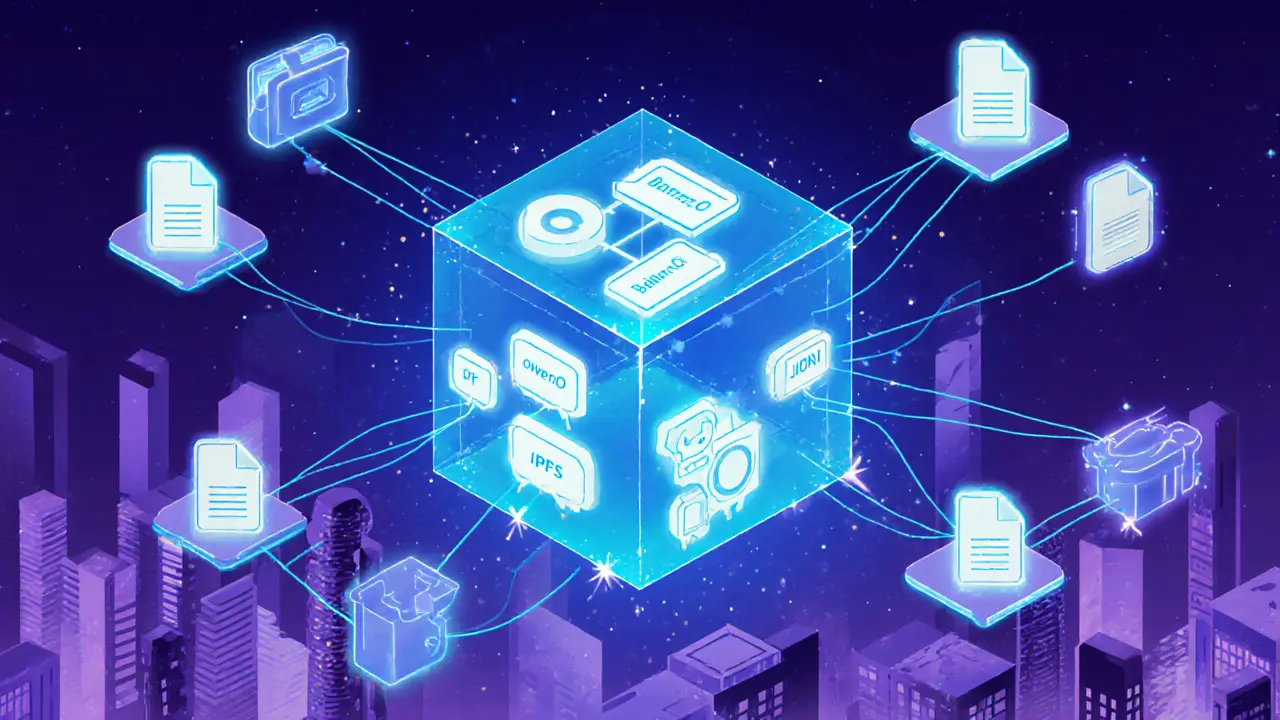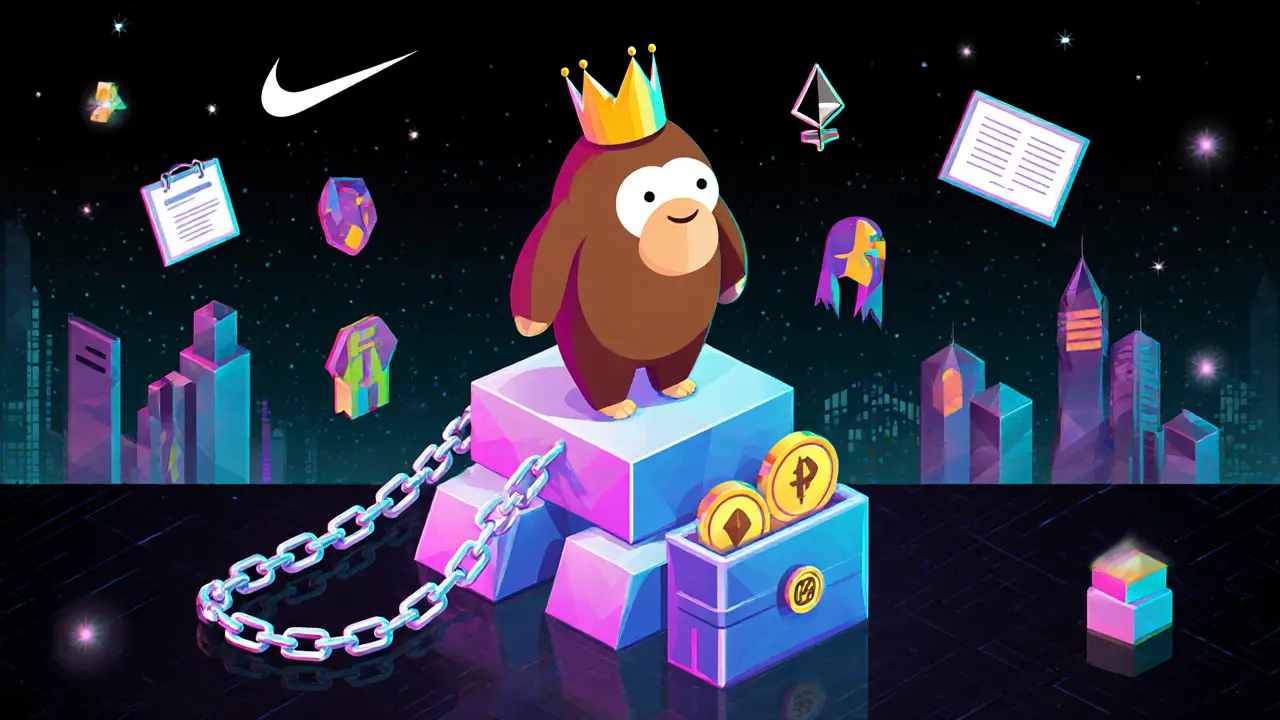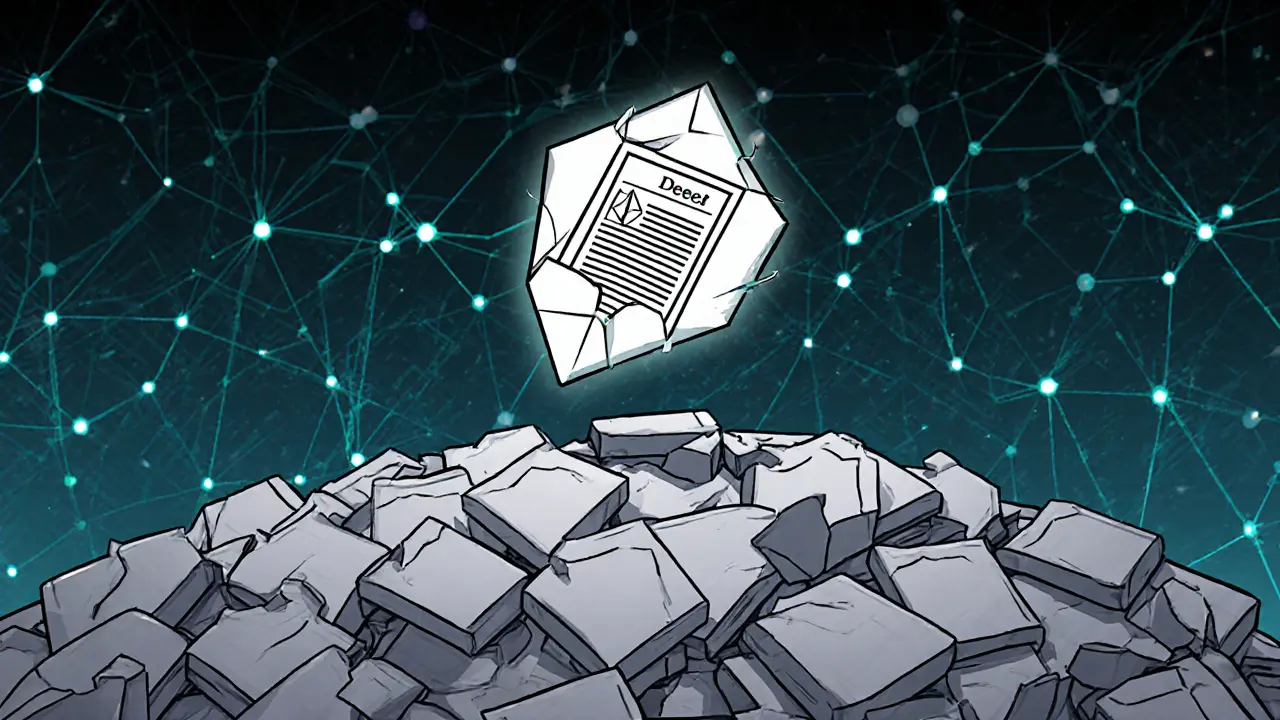ERC-721 Gas Cost Calculator
Calculate Minting Costs
Estimate gas costs for ERC-721 NFT minting based on current network conditions and chosen standard.
Current Gas Information
Before ERC-721, digital items were just files you could copy forever. A piece of art, a virtual sneaker, a rare in-game sword - they all looked unique, but anyone could download and duplicate them. No one could truly own them. Then came ERC-721, and everything changed. This isn’t just another blockchain protocol. It’s the foundation that made digital ownership real.
What Exactly Is ERC-721?
ERC-721 is a technical standard on the Ethereum blockchain that lets you create and track unique, non-interchangeable digital tokens. Unlike Bitcoin or Ethereum coins, where one unit is exactly the same as another, ERC-721 tokens are one-of-a-kind. Each has its own ID, history, and metadata. Think of it like a deed to a house - no two deeds are identical, and each proves who owns what.
It was proposed in January 2018 by a group of developers including William Entriken and Dieter Shirley. The goal? To solve a simple but critical problem: how do you prove you own something digital that can’t be copied without losing its value? The answer was a smart contract standard that enforces uniqueness.
By 2023, over 95% of all NFTs on Ethereum used ERC-721. That’s not a coincidence. It’s because this standard works - reliably, securely, and with broad compatibility.
How ERC-721 Works: The Core Functions
Under the hood, ERC-721 is made up of nine mandatory functions and three events. These aren’t just technical details - they’re what make the system work in practice.
- balanceOf(address _owner) - Tells you how many NFTs a wallet holds.
- ownerOf(uint256 _tokenId) - Finds out who owns a specific token by its ID.
- transferFrom and safeTransferFrom - Move tokens between wallets. The "safe" version checks if the receiver can handle NFTs, preventing accidental loss.
- approve and setApprovalForAll - Let you authorize someone else (like a marketplace) to sell your NFT on your behalf.
- getApproved and isApprovedForAll - Check who’s allowed to move your tokens.
Every time an NFT changes hands, the contract emits a Transfer event. When someone gets permission to trade it, an Approval event fires. These events are public, permanent records on the blockchain. That’s how OpenSea, Rarible, and other platforms know who owns what - they just read the blockchain.
Metadata: Where the Magic Happens
ERC-721 tokens themselves don’t store images or descriptions. Instead, they point to them using the tokenURI function. This URL usually leads to a JSON file on IPFS - a decentralized storage system - containing the NFT’s name, description, image, and attributes.
For example, a CryptoPunk NFT’s metadata might say: "Name: CryptoPunk #4156, Image: [IPFS hash], Traits: Alien, Eyepatch, Mohawk." That’s what you see when you open it on a marketplace. If the metadata link breaks - say, because it points to a server that shuts down - the NFT becomes just a number with no visual identity.
That’s why 78% of NFT projects use decentralized storage like IPFS or Arweave. Centralized servers (like regular websites) can disappear. Decentralized storage can’t.

ERC-721 vs ERC-20: The Big Difference
People often confuse ERC-721 with ERC-20. They’re both Ethereum standards, but they’re built for completely different things.
| Feature | ERC-721 | ERC-20 |
|---|---|---|
| Token Type | Non-fungible (unique) | Fungible (interchangeable) |
| Use Case | Digital art, collectibles, game items | Currency, stablecoins, utility tokens |
| Token ID | Each has a unique ID | All tokens are identical |
| Transfer Method | Transfer by ID | Transfer by amount |
| Metadata | Required for uniqueness | Not used |
Imagine ERC-20 as cash. Five $20 bills are the same - you can swap them freely. ERC-721 is like a signed Picasso. There’s only one original. Copying it doesn’t give you the real thing.
Extensions: Better, Faster, Smarter
ERC-721 isn’t perfect. Minting 10 NFTs at once used to cost over 1.2 million gas - expensive for creators. That’s where extensions come in.
- ERC-721A - Developed by Art Blocks in 2021, this version cuts gas costs by 30-50% during batch minting. It’s now used by over 40% of new NFT projects. For example, minting 10 tokens on ERC-721A costs around 750,000 gas instead of 1.2 million.
- ERC-721P - Lets multiple people own parts of a single NFT. Useful for fractionalized art or shared assets.
- ERC-6551 - Released in 2023, this lets NFTs act like wallets. Your Bored Ape can now hold other tokens, NFTs, or even run simple smart contracts. It’s like giving your digital collectible a bank account.
These aren’t replacements - they’re upgrades built on top of ERC-721. The core standard stays the same, but developers add features to fix its weaknesses.

Market Dominance and Real-World Use
Despite newer blockchains like Solana and Polygon offering cheaper fees, ERC-721 still controls 68% of the global NFT market as of Q3 2023. Why?
- **Security** - Ethereum’s network is the most audited and battle-tested in crypto.
- **Ecosystem** - OpenSea, Rarible, Blur, and Foundation all support ERC-721 natively.
- **Liquidity** - 92% of NFTs worth over $10,000 are ERC-721. Buyers trust it.
Enterprise adoption is growing fast. Nike’s .Swoosh platform processed 1.2 million ERC-721 transactions in Q3 2023 without a single failure. Luxury brands like Gucci and Dolce & Gabbana use it for digital fashion. Even universities are tokenizing diplomas using this standard.
But it’s not just art and fashion. Tokenized real estate, music rights, and event tickets are all being built on ERC-721. PwC predicts tokenized real estate using this standard will hit $5 billion by 2025.
Common Problems and How to Avoid Them
Building an ERC-721 contract sounds simple - until you run into real issues.
- Missing tokenURI - 31% of projects fail to list metadata properly. If you don’t implement this, your NFT won’t show up on marketplaces like OpenSea.
- Wrong transfer function - Using transferFrom instead of safeTransferFrom can send NFTs to wallets that can’t receive them. One developer lost $12,000 this way.
- Centralized metadata - If your image is hosted on a regular server, and that server goes down, your NFT becomes a blank image. Always use IPFS or Arweave.
- Reentrancy bugs - 23% of audited contracts in 2022 had this vulnerability. Use OpenZeppelin’s pre-audited libraries. They’re free and reliable.
Most developers use OpenZeppelin’s ERC721 contract (version 4.9.3) as a base. It handles the hard parts. One Reddit user said it cut their dev time by 40%. That’s the difference between spending weeks debugging and shipping in days.
The Future of ERC-721
Will ERC-721 be replaced? Unlikely. Even with gas fees and complexity, its network effect is too strong. Ethereum’s Dencun upgrade in early 2024 will reduce minting costs by 10-15%. That’s enough to keep it competitive.
More importantly, ERC-721 is evolving. ERC-6551 is turning NFTs into active digital agents. Imagine owning a virtual land plot that automatically pays rent in ETH to your wallet - all because your NFT can hold assets and execute logic.
Regulation is the biggest wildcard. The SEC has signaled that some NFTs could be classified as securities. That could affect 15-20% of projects, especially those tied to profit-sharing or royalties. But for most art and collectibles, ERC-721 remains safe and legal.
As Circle’s 2023 report put it: "ERC-721 has established the foundational framework for digital ownership that will persist regardless of specific implementation details, much like HTTP underpins modern web protocols."
It’s not about the code. It’s about what the code enables: true ownership in a digital world.
What’s the difference between ERC-721 and ERC-1155?
ERC-721 is for unique, single-item tokens. ERC-1155 is a hybrid standard that supports both fungible and non-fungible tokens in the same contract. It’s more efficient for games with thousands of item types - like 100 identical swords and 5 unique legendary ones. But if you need true uniqueness - like a one-of-a-kind digital painting - ERC-721 is still the gold standard.
Can I create an ERC-721 token without coding?
Yes, platforms like Mintable, OpenSea’s Minting Tool, and Rarible’s Creator Studio let you create ERC-721 NFTs with no code. You upload your file, add metadata, and pay the gas fee. But if you want full control - like custom royalties, dynamic traits, or integration with other dApps - you’ll need to write or customize a smart contract.
Why do ERC-721 NFTs cost so much to mint?
Minting an ERC-721 NFT requires writing data to Ethereum’s blockchain, which costs gas. Each token needs a unique ID, ownership record, and metadata link. Batch minting 10 tokens used to cost over 1.2 million gas. But with ERC-721A, that drops to around 750,000. Ethereum’s Dencun upgrade in 2024 will reduce costs further by optimizing how data is stored.
Is ERC-721 only for art?
No. While digital art made ERC-721 famous, it’s used for game items, event tickets, real estate deeds, loyalty points, diplomas, and even car ownership records. Any asset that needs unique, verifiable ownership can use ERC-721. Nike uses it for digital sneakers. BMW is testing it for vehicle history logs.
How do I check if an NFT is truly ERC-721?
Go to Etherscan, paste the NFT’s contract address, and check the contract code. If it implements the ERC-721 interface - functions like ownerOf, balanceOf, and tokenURI - then it’s compliant. You can also look at the token’s metadata link; if it points to a JSON file on IPFS, it’s almost certainly ERC-721. Marketplaces like OpenSea only list ERC-721 and ERC-1155 tokens, so if it’s on OpenSea, it’s one of these two.

Masechaba Setona
November 1, 2025 AT 04:29Kymberley Sant
November 2, 2025 AT 04:24Edgerton Trowbridge
November 3, 2025 AT 17:48Matthew Affrunti
November 5, 2025 AT 12:05mark Hayes
November 6, 2025 AT 17:51Derek Hardman
November 8, 2025 AT 08:55Eliane Karp Toledo
November 8, 2025 AT 19:12Phyllis Nordquist
November 9, 2025 AT 12:21Eric Redman
November 10, 2025 AT 16:28Brett Benton
November 11, 2025 AT 21:32bob marley
November 12, 2025 AT 01:51